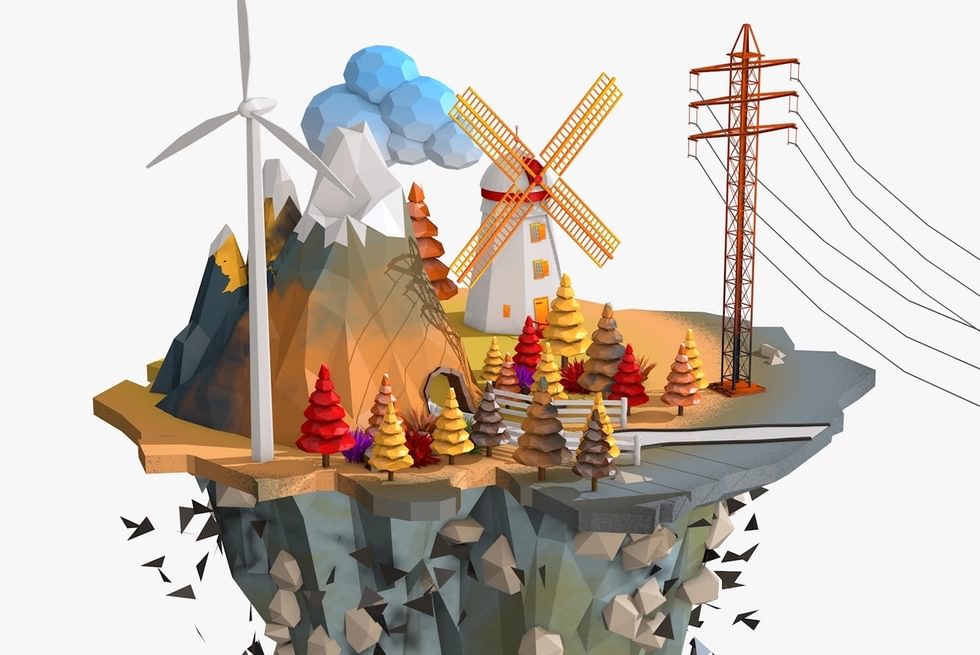Voluminous
From the Series: Speaking Volumes
From the Series: Speaking Volumes

In late April 2011, nearly a month after the Tohoku earthquake caused the catastrophic tsunami in Japan, my Facebook feed featured a series of YouTube clips called Tsunami in Mongolia that were being shared by Mongolian friends. The title perplexed me, given that Mongolia is a mostly semiarid, landlocked country. Yet watching the twelve-part series revealed a tsunami not of water, but of dust.
The clips move between two scenes filmed at a place called Tsagaan Had (White Cliff) in the Gobi desert close to the Chinese-Mongolian border, where coal from the Tavan Tolgoi deposit is stockpiled before its export to China. The first scene is of an encampment of traditional Mongolian shelters (gers) encompassed by a dust storm. Strong winds whip around the gers while SUVs and massive trucks drive through the encampment, coming in and out of focus amid dust billows. The second scene is of a seemingly endless stream of trucks loaded with coal as they drive over a rough dirt road. Although the sky above is blue, plumes of brown dust rise behind the trucks’ heavy wheels, making it difficult at moments to distinguish one truck from another.
Over the droning wind and the clamor of trucks, the Mongolian man behind the camera gives a running commentary about these scenes. He calls the place Black Cliff instead of White Cliff because everything seems to have darkened from blowing coal particulates, from the sooted faces of Chinese drivers to the soiled felt covers of gers operating as shops, which sell goods in Chinese yuan instead of Mongolian tugrik. The cameraman laments the erosion of the soil beneath the wheels of trucks moving wildly across the desert like dinosaurs, raising dust so omnipresent that when the wind stops, it stagnates like fog. He goes on to contemplate whether this is, in fact, still Mongolian territory or Chinese territory, as he repeats the refrain “Yu ch haragdaggüi [Nothing is visible].”
I draw attention to the Tsunami in Mongolia series because it exposes territory going atmospheric. Unlike the slower shifts of sand and dust described through oceanic and fluid metaphors (see Zee 2017), here the tsunami signals an enveloping and volatile force of matter on the move as dust is made airborne by the earth-grinding activities of coal mining and road transport. The series visualizes the conjoined relations of “vertical reciprocity” (Adey 2010, 2) that reside between subterranean, surficial, and aerial spaces. These planes are not merely entangled with each other; rather, their unique materialities, mobilized through activities like mining and forces like wind, bring them into relation in ways that are constitutive of new, multidimensional spatial forms.
In the years that I have spent tracking the mining boom in this region, Mongolians have described to me how they feel like the land has been turned upside down: as the ground is hollowed out from coal extraction, the air is thickened with soil, coal, and dust. While this flux has a vertical dimension, it is sensed on the ground as an expansive, enveloping spatiality that might best be described as voluminous.
Voluminous works on another register as well, in that volumes lend themselves to calculation (Elden 2013). Near the mining areas of the Gobi, people practice a form of everyday volumetrics by drawing equivalences between the volume of coal extracted from the ground, the volume of trucks going to China, and the volume of particulate matter in the air. While sometimes the skies offer clues, people also use other methods of indexing the atmosphere, by observing their own health (skin problems, eye infections, breathing difficulties) and the health of livestock (the color and texture of innards). In these ways, “being in-atmosphere” (Howe 2015, 204) is a way of feeling and navigating an economy that is, quite literally, tethered to the ground.
It is also in these voluminous states and encounters that concerns around territorial sovereignty gain substance. The displacement, metamorphosis, and fugitive nature of matter blur borderlines not only between spatial planes, but also in terms of experiences of territory. The cameraman bears witness to this as he draws connections between the intensified presence of Chinese drivers and moneys on Mongolian land and the surrounding dusty environs, wondering whether he is still in Mongolia given that much seems beyond the reach of visibility—including, perhaps, territory itself. While the elusive movements of new phenomena signal processes of reterritorialization, it is the spatial depth and reach of these processes that redefines what counts as territory and how it can be governed, particularly when substances like dust are so difficult to contain.
While this description is specific to emerging forms of territory in southern Mongolia, it provides a way of seeing how the conjoined relations between subterranean, surficial, and aerial spheres generate experiences of territory as a multidimensional sociopolitical space. It also asks after the kinds of volumetrics that people employ to track territorial transformations and do the “border work” (see Reeves 2014) involved in enacting territorial control and governance. This line of inquiry looms large in the time of the Anthropocene, when subterranean extraction and atmospheric thickening have become key terrains of politics.
This essay draws on research conducted as part of the European Research Council–funded project “Emerging Subjects” (ERC-2013-CoG, 615785), which is based at University College London.
Adey, Peter. 2010. Aerial Life: Space, Mobilities, Affects. Malden, Mass.: Wiley-Blackwell.
Elden, Stuart. 2013. “Secure the Volume: Vertical Geopolitics and the Depth of Power.” Political Geography 34: 35–51.
Howe, Cymene. 2015. “Life above Earth: An Introduction.” Cultural Anthropology 30, no. 2: 203–209.
Reeves, Madeleine. 2014. Border Work: Spatial Lives of the State in Rural Central Asia. Ithaca, N.Y.: Cornell University Press.
Zee, Jerry C. 2017. “Holding Patterns: Sand and Political Time at China’s Desert Shores.” Cultural Anthropology 32, no. 2: 215–41.